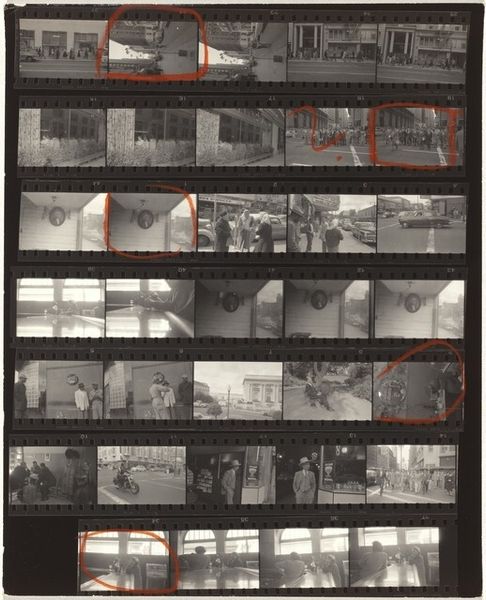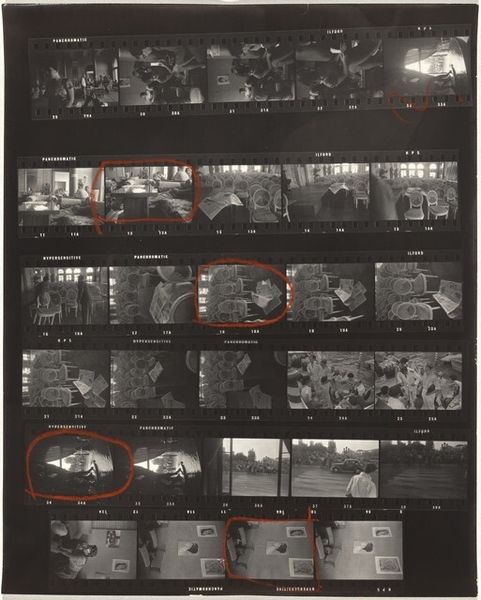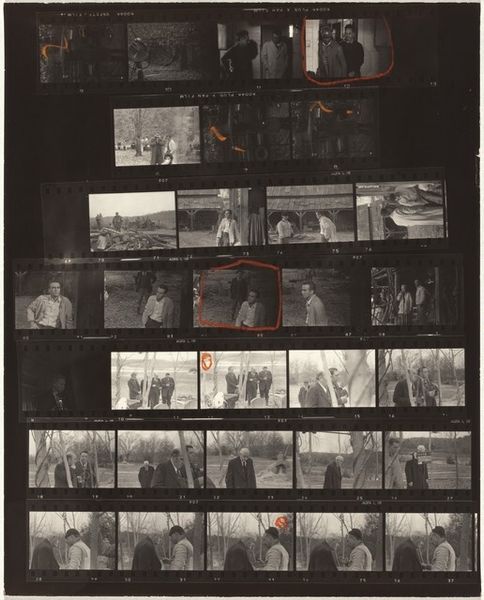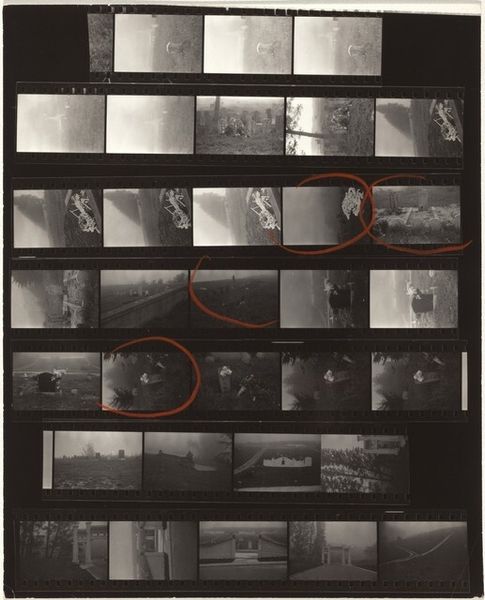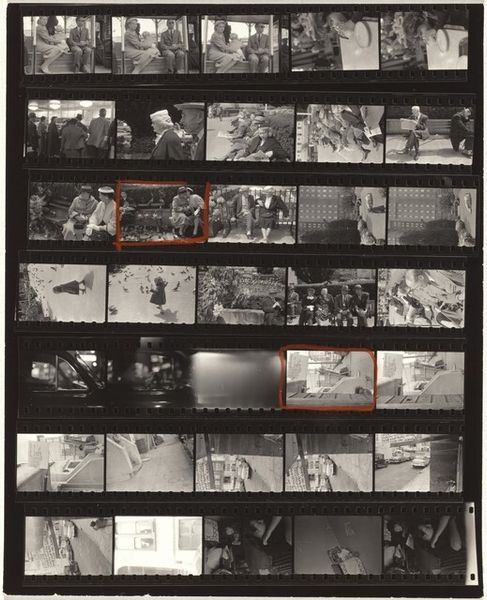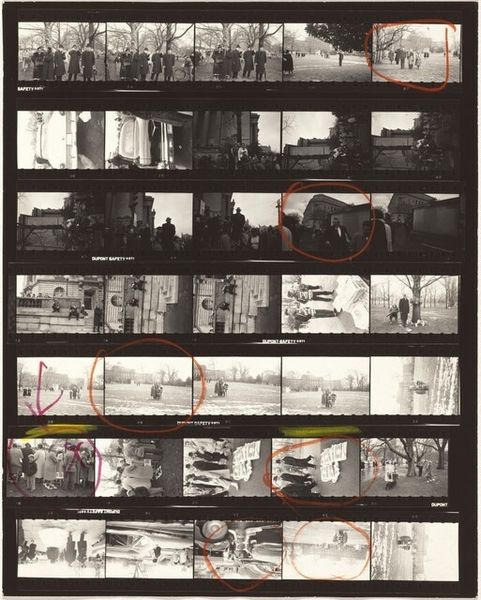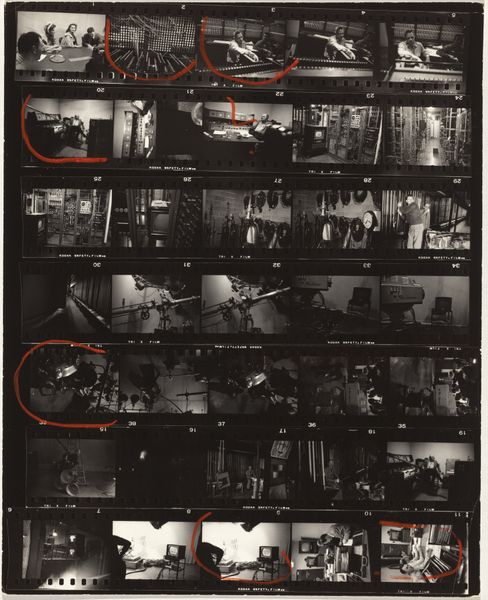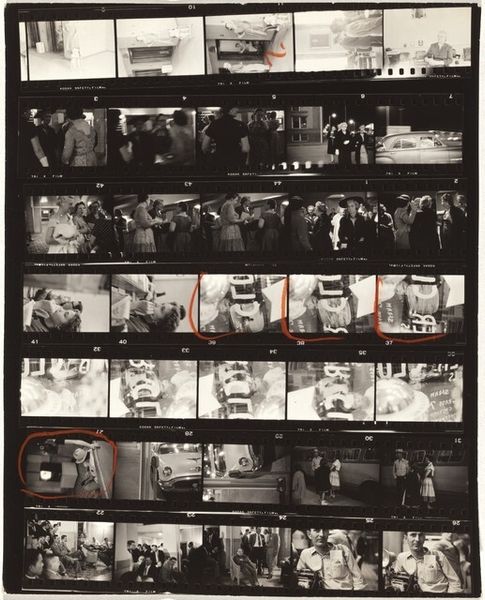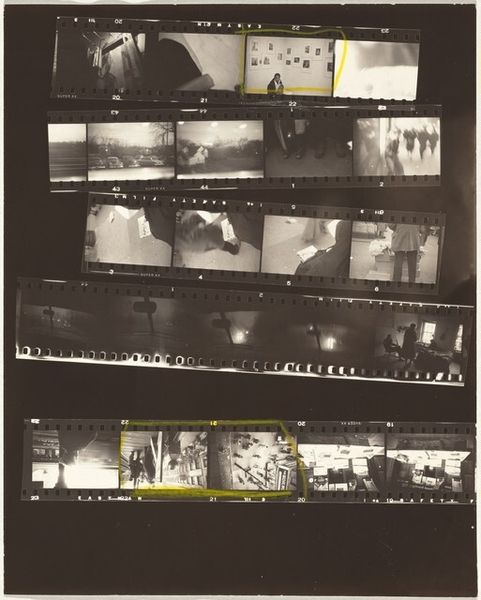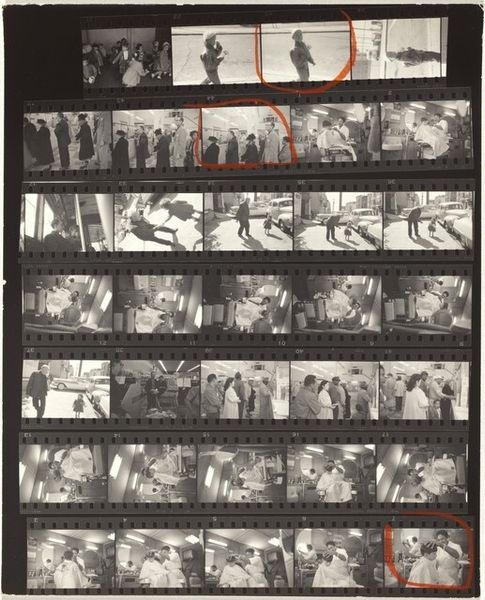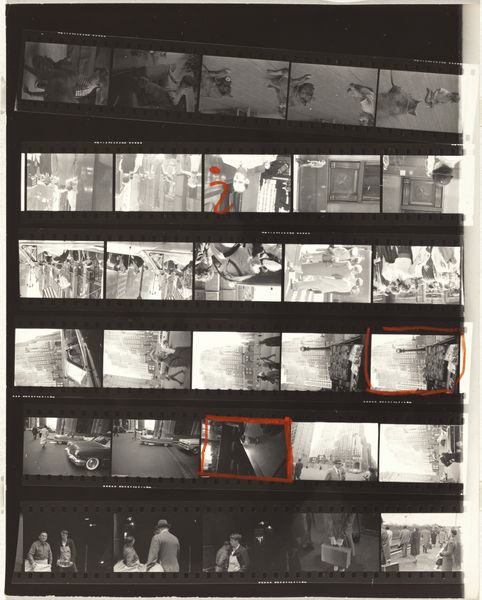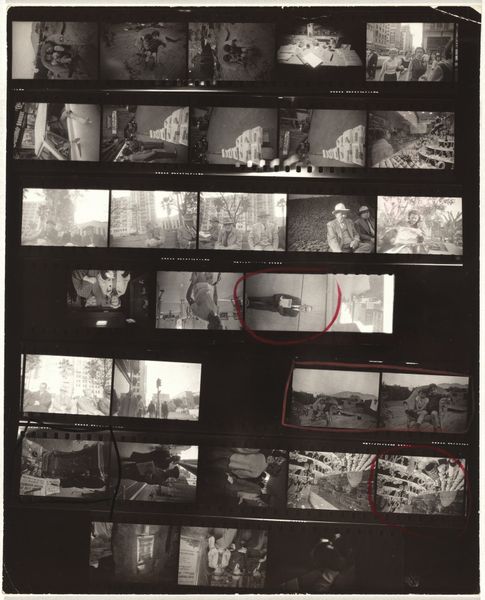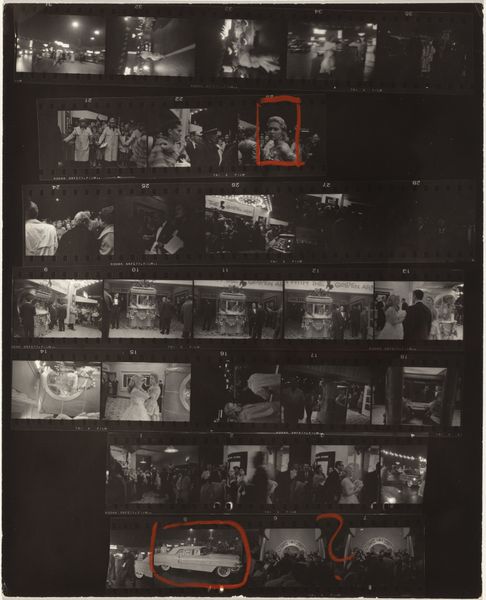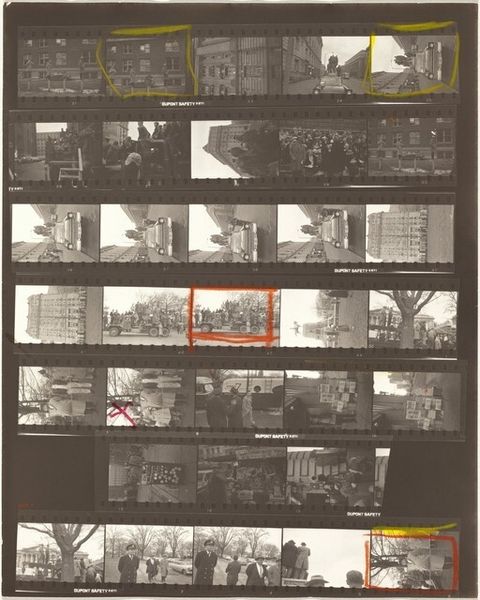
photography
#
portrait
#
film photography
#
landscape
#
street-photography
#
photography
#
visual diary
#
film
#
realism
#
monochrome
Dimensions: overall: 25.2 x 20.2 cm (9 15/16 x 7 15/16 in.)
Copyright: National Gallery of Art: CC0 1.0
Curator: Robert Frank’s series of images, possibly taken in 1959, offer glimpses into the filming of Elia Kazan's "Wild River" in Tennessee. This particular sheet, labeled “Tennessee 14,” reveals a behind-the-scenes narrative. My initial impression is of fragmented observation—like snippets of a forgotten time, composed entirely in monochrome. Editor: The way Frank captures this specific moment in American cinema also strikes me as indicative of broader social tensions inherent to the American South. Consider Kazan's "Wild River", and its focus on displacing communities through projects of modernization. It's impossible to divorce the act of filmmaking from these larger issues of power, class, and representation. Curator: Precisely. Consider the arrangement of the individual frames. There's a fascinating play between those images circled in orange—isolating certain gestures and poses—and those marked with an 'X', perhaps indicating rejected shots. The texture created through this contact sheet offers an unusual study in film form. Editor: Right, and those editorial decisions themselves invite reflection. Who gets framed, and why? I am intrigued by the images that make the cut and by those discarded. It points toward a politics of looking, directing our attention not just at cinematic production but also at the hierarchy of image selection during a moment of segregation and intense social transformation. We cannot overlook the importance of examining how racial lines shaped vision, literally and figuratively. Curator: So true. There is a fascinating tension evident through Frank’s engagement, balancing formalism with observational curiosity. We glimpse crew members at work, then transition to evocative portraits of actors and landscapes, constructing a visual poem through his filmic sequences. Editor: Ultimately, Frank presents not merely a film shoot but a concentrated, photographic investigation into storytelling itself. And importantly, one can't simply divorce aesthetics from underlying systems of societal influence. To me, Robert Frank invites the consideration of historical memory, media production, and the way human activity unfolds. Curator: His work challenges us to recognize film-making not only as an art form but also a lens into larger cultural themes and personal reflection. Editor: Definitely, an investigation, in equal measures, into what we see and why.
Comments
No comments
Be the first to comment and join the conversation on the ultimate creative platform.
